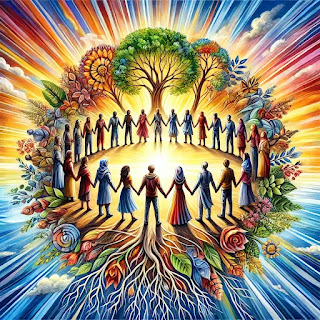In a world filled with diversity, it's easy to become entangled in differences—differences in community, color, religion, language, and countless other factors that often serve to divide us. Yet, as we look toward the future, it is clear that the true strength of a nation lies not in its divisions but in its unity.
I believe we must rethink how we approach our country’s growth and development. It’s not about focusing on where we come from, our backgrounds, or the labels that define us. Instead, it’s about working together to create something far greater than the sum of our parts. A nation is at its strongest when every citizen is valued, every voice is heard, and every effort is directed toward collective progress.
Why Unity Matters
Unity is more than just a feel-good concept; it’s a driving force behind progress. When people from different walks of life come together, bringing their unique perspectives and talents, the possibilities are endless. Whether it’s building robust economies, advancing science and technology, or solving social challenges, diverse teams working toward common goals have consistently outperformed fragmented efforts.
History provides countless examples of how division has led to stagnation or conflict, while unity has fueled revolutions and breakthroughs. Consider the struggles for independence across the world, where people set aside their individual differences to rally behind the common cause of freedom. Or look at global movements for civil rights and equality, which remind us that progress is possible when people unite against injustice.
Breaking Down Barriers
Yet, despite the evidence, we still find ourselves caught in the traps of division. Prejudices based on race, religion, caste, and other distinctions continue to hinder our collective progress. These divisions are often fueled by fear, misunderstanding, or political agendas that thrive on keeping people apart.
But here’s the truth: the barriers that separate us are not insurmountable. They are human-made, which means they can be broken down by human will. Empathy, dialogue, and education are powerful tools in dismantling these walls. When we make the effort to understand each other, we realize that our shared humanity far outweighs our differences.
The Role of Every Citizen
Change doesn’t happen overnight, and it doesn’t come from governments alone. Each of us has a role to play in shaping a unified nation. It begins with simple acts—treating others with respect, standing against discrimination, and fostering a sense of belonging in our communities.
It also means looking at the bigger picture. Our individual goals and achievements are important, but they are even more impactful when aligned with the greater good. Imagine the possibilities if we channeled our collective energy into addressing issues like poverty, education, healthcare, and climate change.
A Vision for the Future
A united nation is not just a dream; it’s a necessity for survival in today’s interconnected world. When we unite, we unlock the potential for innovation, resilience, and unparalleled progress. We create a society where every citizen feels empowered to contribute, and every community thrives.
As we look to the future, let us commit to building bridges instead of walls, celebrating our differences instead of fearing them, and focusing on what unites us rather than what divides us.
Let us remember: we are stronger together. Our diversity is not a weakness but a strength. And our ability to come together as one people, with a shared vision of growth and prosperity, is what will define our nation’s destiny.
The time to act is now. Let us unite—not split—and move forward hand in hand, creating a brighter future for generations to come.

Comments
Post a Comment